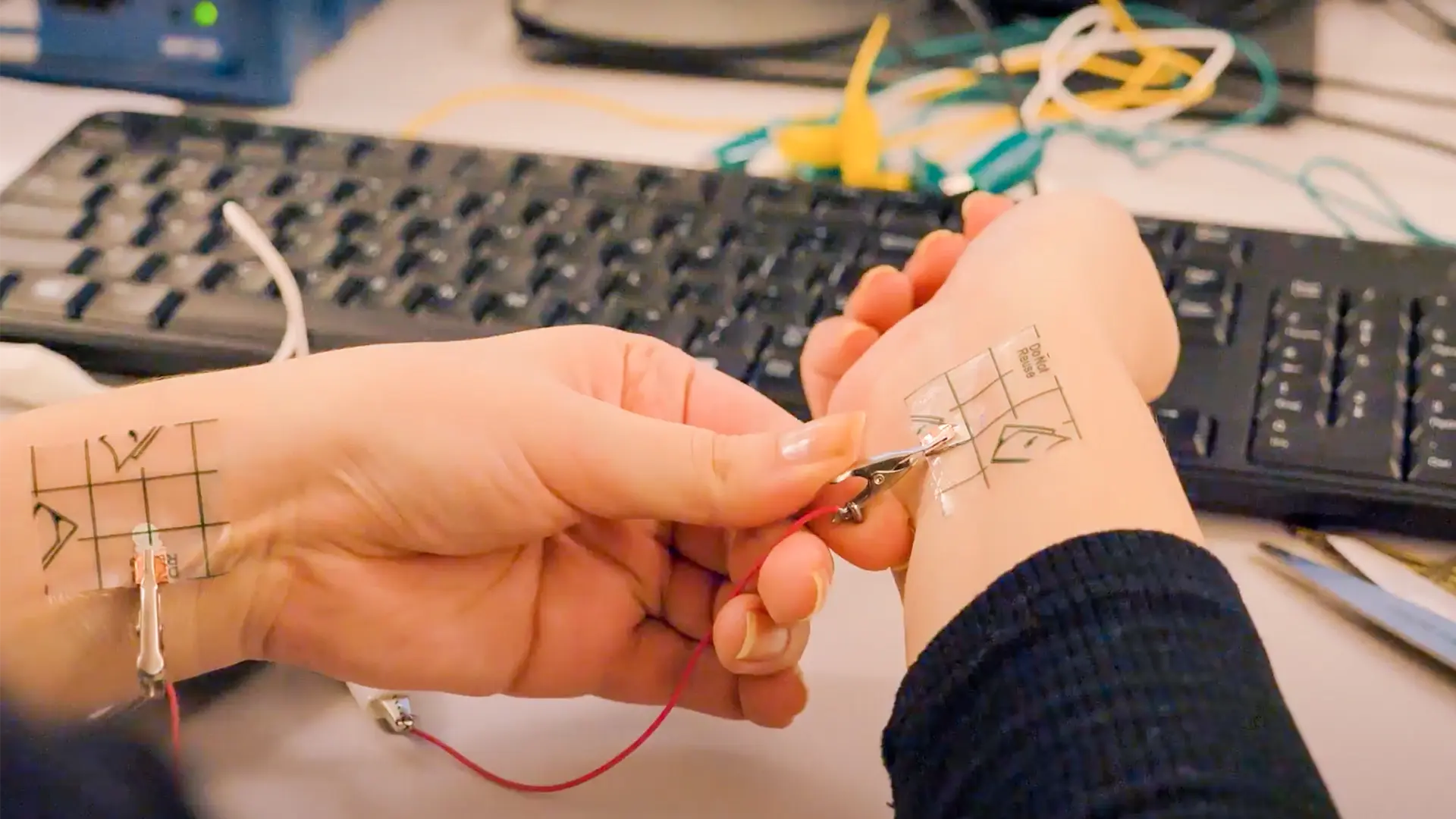What is Solder Paste?
If you are familiar with solder paste, you know how it can make for messy work — applying it to a stencil, solder paste getting all mixed up with your circuits — it can end up being more trouble than it’s worth. This is a problem we have solved with our printers, V-One and NOVA, which use direct-write printing technology to dispense solder paste exactly where you need it — and nowhere else. If this is somewhat of a new concept and material, our hope is by the end of this blog, it won’t be.
So, what exactly is solder paste? Great question — we can’t wait to tell you!
What is solder paste?
Solder paste is a sticky, non-Newtonian fluid composed of flux and a metal alloy. It’s used in the manufacturing of printed circuit boards (PCBs) to hold components in place, just like regular solder wire would. Once applied to the circuit and all dressed up with its needed components, the board is then heated to melt the paste and form a mechanical bond as well as an electrical connection in a process known as reflow.


But let’s not get ahead of ourselves. How does one choose a solder paste? Let’s break it down. Any solder paste is made up of two main components — the powdered solder and flux.
Solder
Powdered solder is a fusible metal alloy. Under a microscope it appears to be a smooth cluster of tiny metal balls — which is exactly what it is! These metal particles can range in size from T1 to T8. They are rated on a scale where the lowest number of powder type (T1) corresponds with the largest powder size in microns.
Size is important to keep in mind, because you’ll need to adjust what nozzle you use based on the type of solder paste in order to avoid clogging. A good rule of thumb is to use an aperture six times larger than the particle size of the solder paste you are using. Not following this rule and using a 150 micron nozzle with a T4 paste would result in clogging. Clog city is a destination no one wants to arrive to when the goal is clean and smooth circuits done simply. Even though the powdered metal alloy makes up most of the solder paste, they are all suspended in the second component of solder paste, flux.
Flux
Flux is a chemical cleaning agent, flowing agent, or purifying agent. In traditional soldering, it is directly applied to the soldering iron to help with the wetting process when combining with soldering wire. The wetting process is the crucial part of soldering — it’s when the metal in the solder bonds with the metal on the PCB or component. The solder then becomes a molten fluid and can adhere to the component for an optimal solder joint. I think we all know that if we want any kind of solder joint it’s an optimal one.
Typically flux is a separate substance from the solder itself but just like an efficient 2-in-1 shampoo and body wash, solder paste combines flux with powdered solder. When combined, the flux operates as a carrier for the metal and also protects the particles from oxidizing — which will lead to issues like solderability loss and graping. Just like with traditional flux, it’s main benefit is the ability to help with the wetting process. Flux comes in different varieties that are broken down by type, activity and halide content.
Type: Refers to the main vehicle that facilitates the heat transfer while also offering protection from oxidation to the hot metal surface by acting as an oxygen barrier — rosin ( RO), resin (RE), organic (OR), and inorganic (IN)
Activity: Refers to the ability to dissolve existing oxides on the metal surface and promote wetting. The activity level is scaled by indicating L: low, M: moderate, or H: high.
Halide Content: Refers to the halogen (usually chlorine or bromine) present in the solder paste which functions to remove oxidation and boost the wetting properties of your solder paste. Halide content is split into two different categories:
Voltera’s solder paste
FUN TIP: Here at Voltera we use a REL0 tack flux, that is made of resin (RE) with a low activity (L) and a halide content with a weight less than 0.05% (0).
WHY?
After extensive comprehensive testing and experimenting trying to find what worked best with conductive ink, this was what worked. There’s a lot of guesswork that goes hand in hand with solder in regards to how the composition will influence performance, where even small changes in alloy composition can impact compatibility. It’s crucial to test what works best. We did the work using our engineering minds and scientific perspectives to do that work for you on what works best with our silver conductive ink on the V-One so you don’t have to.
It’s important to know which solder paste works best for the project you’re working on and the corresponding tools needed to complete the job. Here at Voltera, our solder paste features the trio of tin, bismuth, and silver. This is important, because the common metal used in soldering wire, traditional solders, and in the HASL finish on prefabricated boards likely contain lead. Why is this crucial to note? Well, bismuth and lead are not friends — they will argue and ruin your party. If you switch printing methods or materials without keeping this in mind and thoroughly cleaning your iron in between, you could have a real bad time. But you wouldn’t need to worry about that as much if you’re using the V-One. Just sayin’. The reason why we use a tin-bismuth-silver solder paste is that it melts at low temperatures — ~140°C —and because it has a small quantity of silver already mixed in. Both of these factors help it create a strong bond with the silver in the conductive ink in your traces as opposed to dissolving them like a tin-lead solder paste would. When it comes to the V-one and its printed boards, a solder paste with thicker flux works best, too — which is exactly how our solder paste is made.
How to properly maintain it
There are a couple maintenance things to consider, such as: Don’t force it! If you can’t get anything to come out of the nozzle and you apply force, it’ll most likely rupture the cartridge.
The simple solution?
Swap out the nozzle and purge it if the paste isn’t flowing smoothly. Also, make sure to check your cartridge for flux leakage around the piston.
A little is alright but when in doubt, throw it out. You also want to keep in mind that if the flux dries up or the paste separates it goes from solder paste to solder waste. A dry paste is one with less tack. The tack component of our flux is important because liquid flux can spread everywhere and not transfer heat well, while tack flux holds its shape until you heat it. When you lose tack, you lose solder paste’s ability to maintain its stickiness over time. So, always make sure to properly store it and do not leave it sitting more than two hours before reflowing.
Now that you have a better understanding of what solder paste is, what it’s made of, and how we use it here at Voltera, we encourage you to give it a go. Solder paste is just one way we can print anything on everything — with the V-One.
Have you checked out our YouTube video about solder paste? You really should. Mike, our support-hero-turned-content-creator has some excellent tips on working with solder paste and your V-One!

Check out our Customer Stories
Take a closer look at what our customers are doing in the industry.

